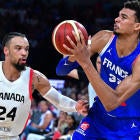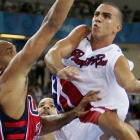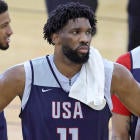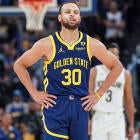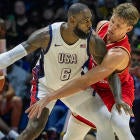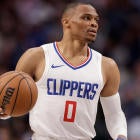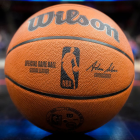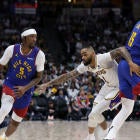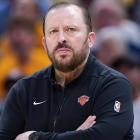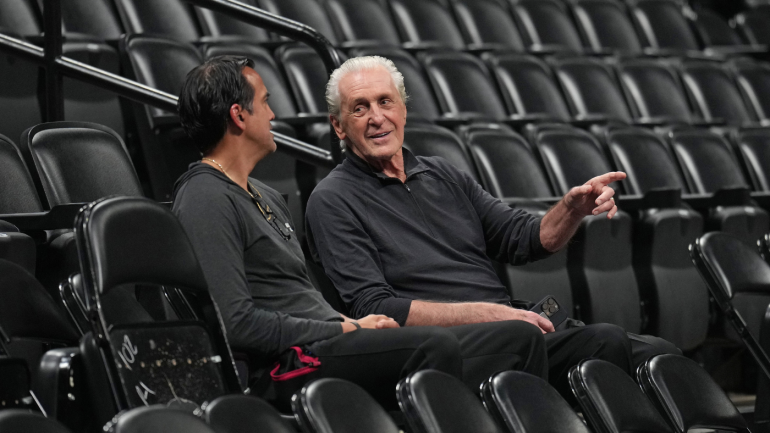
We can say four things about the ongoing Damian Lillard sweepstakes with relative certainty.
- Lillard wants to play for the Miami Heat and only the Miami Heat. His agent said as much.
- There are a number of other teams capable of offering more than the Heat can.
- The Blazers are not enthused by what the Heat, to this point, have offered, and are prepared to wait months for a better deal.
- None of those teams that are capable of offering more than the Heat have yet done so perhaps due to Lillard's Heat fixation.
Nobody is disputing the first point. The second is an obvious symptom of the all-in NBA. The league simultaneously contains teams that control none of their own first-round picks and teams that control over a dozen picks in the next seven drafts. The reality that teams closer to that second extreme will eventually start trading for stars is going to take hold in the near future. The Heat aren't exactly asset-poor, but they're closer to the negative end of the spectrum.
That third point is where things start to get fuzzier, and that fourth point is what will ultimately determine what Lillard gets traded for. There is, in all likelihood, a vast difference between what the Heat can offer and what the Heat have offered. The latter, based on standard trade negotiation tactics, is likely relatively little.
The former, despite protests to the contrary, is significantly heftier. Just because the field is capable of offering more does not mean the Heat necessarily fall short of the acceptable threshold. As unfair as it might seem, superstars tend to pick their teams when they get traded. The Blazers would surely prefer an open bidding war. History suggests that the field is going to exist here as a mechanism to squeeze more out of the Heat. In all likelihood, there is a line the Heat are at least capable of crossing that would complete a deal before training camp. It just depends on how far into their relatively thin war chest they are willing to dip.
So as the two sides trench up for a protracted leverage war, it's worth exploring the offer Miami is actually capable of making, and what it would take to convince them to make it. Let's start with the obvious question...
What do the Heat have to trade?
At this moment, the Heat are capable of trading two first-round picks and three first-round swaps. The two exceptions within their seven-year allotment are in 2025 and 2026. They currently owe the Oklahoma City Thunder their lottery-protected pick in 2025, but if it does not convey, it becomes unprotected in 2026. That means that, for Stepien Rule purposes, they cannot trade any picks outright until 2028. In other words: they can offer swaps in 2024, 2027 and 2029 along with unprotected picks in 2028 and 2030.
There is an easy workaround here if the Heat need to create another tradable pick, though. The Thunder would almost certainly rather have Miami's unprotected pick in 2026 than a pick between 15-30 in 2025. The two sides can therefore agree to amend the pick currently owed to turn it into an unprotected 2026 pick with no strings attached. This would give Miami control over its 2025 selection and the ability to trade its 2024 pick outright. With this approach, they would be able to send swaps in 2025, 2027 and 2029 along with unprotected picks in 2024, 2028 and 2030.
Now we move on to players. As of this writing, the Heat have nine players eligible for trades. We can safely assume that Jimmy Butler and Bam Adebayo would not be in a trade. Duncan Robinson, with three expensive years left on his contract, is a negative asset. That leaves six players for us to cover.
Four of them are relatively young enough and affordable enough to make sense for the Blazers: Eastern Conference finals hero Caleb Martin, 2023 first-round pick Jaime Jaquez Jr., 2022 first-round Nikola Jovic and reserve forward Haywood Highsmith. We can presume that Portland's preference would be to land all four of these players. They all have a positive value in both a vacuum and on Portland's specific roster.
The last two players represent our matching salary. Kyle Lowry is an expiring contract at just under $29.7 million. Tyler Herro is about to begin a four-year, $120 million extension that is widely perceived around the league to carry some degree of positive value. Portland doesn't actually need guards, though. Lowry is an acceptable one-year proposition as a mentor for their younger players. Herro would need to be rerouted elsewhere. Yahoo's Jake Fischer reports that there is optimism around the league that Herro will fetch at least one first-round pick in the deal, which could then be sent to Portland, bringing their total get to four picks and three swaps.
One last bit of business: Portland would likely prefer to use this trade as an opportunity to escape their questionable four-year, $70 million deal they gave Jusuf Nurkic last offseason. The Heat can technically accommodate them. The combination of Lillard and Nurkic makes roughly $5.8 million more than the combination of Lowry and Herro. Add a couple of those other young players we mentioned and the money evens out.
All told, that would leave us with the following "all-in" trade between the Heat, Blazers and a third team:
Heat receive:
- Damian Lillard
- Jusuf Nurkic
Blazers receive:
- Four first-round picks. Three from Miami (2024, 2028, 2030). One from the third team.
- Three first-round swaps, all from Miami (2025, 2027, 2029).
- Caleb Martin
- Nikola Jovic
- Jaime Jaquez Jr.
- Haywood Highsmith
- Kyle Lowry
- Matching salary X from third team
Third team receives:
- Tyler Herro
Now that we know what exactly the Heat can offer...
How valuable is Miami's all-in offer?
Reports early in the process claimed that the Blazers want four first-round picks and two quality players in a Lillard deal. Miami's all-in offer satisfies those requirements. So why has the league-wide reaction to it been so negative?
Well, these are Heat picks we're talking about here. The Heat are never bad... right? That's a bit of a misconception. As successful as Miami has been over the past 25 years, that success hasn't come with the consistency of, say, the Tim Duncan Spurs. The Heat have missed the playoffs six times this century. Get control of six of their picks and the odds suggest you're getting into the lottery once or twice. They even landed in the top five twice: for Dwyane Wade in 2003 and Michael Beasley in 2008. The Heat do so well with their draft picks that you forget that some of them are actually fairly high. Bam Adebayo and Tyler Herro were picked in the lottery.
Lillard turns 33 on Saturday. Butler will turn 34 before opening night, and he's missed between 15 and 20 games in all four of his Miami seasons. Most importantly, though, Pat Riley is 78. He's not going to run this team forever. What happens when he's gone? Erik Spoelstra has earned the right to succeed him as a team president. Ask Doc Rivers and Stan Van Gundy how head coaches normally do with personnel control.
In fairness, Miami's front office has little in common with a typical organization's. After all, it seems like half of all NBA front offices are run by Spurs alums whereas none of Riley's disciples have left for their own team. That's not for lack of qualification, the Heat simply do a remarkable job of retaining their talent. Cap wizard Andy Elisburg and assistant general manager Adam Simon frequently draw praise around the league. Simon started with the Heat as a video room intern under Spoelstra. Elisburg has been with the team since its inception in 1988. If any team is capable of carrying on the legacy of a retired executive, it's the Heat. That just isn't a certainty.
If the Heat trade for Lillard, there is going to be a time in the not-too-distant future in which both Lillard and Butler are either seriously overpaid or off of the roster, and the Heat, having exhausted their assets acquiring that duo, have no obvious means of replacing them. Adebayo will remain. Solitary defenders do not drive winning. Jakob Poeltl just got $80 million from the Raptors largely for his rim protection. When the Spurs traded him in February, they were on pace to have the worst defense in NBA history. They just drafted Victor Wembanyama. Adebayo is better than Poeltl. There's only so much a single defensive star can do.
And then there's the matter of those two quality players Portland seemingly wants in this deal. Where exactly is the bar here? Superstar trades are relatively inconsistent in this respect. Even if they weren't quite so proven at that time, Utah (Lauri Markkanen) and Brooklyn (Mikal Bridges) just got young All-Stars in their blockbusters. Miami doesn't have one to offer if Adebayo is staying put. Even if Herro made sense for Portland, his limitations as a defender and playmaker likely pigeonhole him as an off-guard that needs a specific structure to thrive. How many teams can surround him with the playmaking and defense Miami has?
Jovic and Jaquez are unknowns. Martin might as well be. As impressive as his playoff performance was, he'll turn 28 before opening night and has scored only roughly as many points in his career (1,609) as LeBron James did last season (1,590). How many ecosystems can support a 6-5 power forward? Was his relatively weak showing in the Finals just a fluke of poor shooting, or did he just turn back into a pumpkin? The cost of finding out is thankfully minimal. He's owed less than $14 million over the next two seasons.
All of this is to say that the actual appeal of Miami's package is somewhat debatable, with reasonable valuations ranging from "acceptable" to "stop calling us, Pat." For a team to top it, they would have to present some combination of more picks, better picks or an ascending young player in the vein of Markkanen or Bridges. Does a trade offer like this even exist, putting aside Lillard's push for Miami?
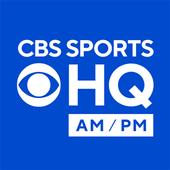
CBS Sports HQ Newsletter
Your Ultimate Guide to Every Day in Sports
We bring sports news that matters to your inbox, to help you stay informed and get a winning edge.
Thanks for signing up!
Keep an eye on your inbox.
Sorry!
There was an error processing your subscription.
Who can outbid the Heat?
If there's a Bridges or Markkanen equivalent out there for Portland, he's doing an awfully good job of hiding his existence. Lillard's position is as problematic here as his aversion to non-Heat teams. The market for 33-year-old point guards is relatively small. Out of the NBA's 29 non-Portland teams, 10 are already paying $25 million or more for a starter they are satisfied with and another four have rookie-contract point guards headed in that direction. That takes roughly half of the league out of the equation. Teams like the Lakers, Clippers, Bucks and Suns might have been interested at a more reasonable price, but with little tradable draft capital, they can't realistically get into the bidding. Teams in the lottery are too far away to credibly grab Lillard.
We're looking for uncomfortable fits here. Some teams are more comfortable with discomfort than others. Is Golden State really committed to starting the season with Chris Paul on their roster? His salary can be aggregated again starting in September, and Jonathan Kuminga likely appeals to Portland far more than Herro does. Lillard might actually bend his "Miami or bust" mandate to play for his hometown Warriors. Gary Payton II would have to be in the deal for financial purposes, but based on his ugly stint in Portland last season would probably have to land on a third team.
The Warriors can offer unprotected picks in 2026 and 2028 (with a bit of help from the Celtics, who currently own Golden State's protected 2024 pick) as well as swaps in 2025, 2027 and 2029. If they wanted to get really funky, they could even trade the presently unprotected slots on the 2030 first-round pick they owe Washington to Portland as well. The Wizards get Golden State's 2030 pick if it lands between 21 and 30, but picks 1-20 are up for grabs. New Orleans recently used this pick to effectively trade the same draft pick to two different teams, landing Devonte' Graham from Charlotte and C.J. McCollum from Portland in the process.
Karl-Anthony Towns and Mike Conley match the salaries of Lillard and Nurkic almost perfectly, and Minnesota probably can't expect to realistically contend with almost $90 million tied to centers next season. But Minnesota exhausted its supply of picks in the Rudy Gobert trade, and Jaden McDaniels appears untouchable. Besides, as much as Portland could stand to improve at center, it probably needs more of a defensive anchor in that slot with its guard-heavy roster. Oh, and good luck selling Lillard on Minnesota, no matter how perfectly Gobert, McDaniels and Anthony Edwards would fit alongside him.
The Pelicans, Jazz, Thunder and Raptors all have the youth and draft capital to comfortably outbid Miami while still retaining rosters that could credibly contend. Utah and Oklahoma City have no motivation to rush their rebuilds. Things are going too well for them to bet on a player who doesn't want to play for them. The Raptors and Pelicans could go in either direction based on health (New Orleans) and extension talks (Toronto). They're interesting wildcards, but hardly championship locks even with Lillard.
Philly is the X-factor here. Daryl Morey was willing to hold Ben Simmons for four years. He's not going to let Lillard's desire to play for the Heat scare him off. If there's a workable trade here, the Sixers will make it. Of course, getting there would take several steps. The 76ers currently have only one tradable first-round pick, their 2030 selection.
Sending James Harden to the Clippers could replenish their asset supply. Los Angeles has available picks in 2028 and 2030 along with swaps in 2027 and 2029. Would the Clippers give all of that up? Would they send the Sixers good matching salary (Terance Mann, Norman Powell), medium matching salary (Nicolas Batum, Robert Covington) or bad matching salary (Marcus Morris) in such a deal? There has been little reporting on traction between the two sides here.
Tyrese Maxey might be more valuable as a player than Bridges was at the time of his trade, and is certainly more valuable than Markkanen looked a year ago. His athleticism gives him an upside Herro lacks, and after spending the past year-and-a-half with Harden, he hasn't really had much of an opportunity to develop as a playmaker. That could change in the right situation. Portland, with Henderson and its cadre of young guards, is not that situation.
Philadelphia wouldn't lack suitors if it dangled Maxey for the assets to get Lillard. Those same teams that are interested in Herro would pay more to get to Maxey. Other suitors would emerge. There are conceivable four-team constructions in which the 76ers functionally send out Harden and Maxey to get Lillard. Would that be worthwhile for them? De'Anthony Melton is a starting-caliber shooting guard, and Tobias Harris and P.J. Tucker remain at forward. If the Sixers could squeeze some worthwhile depth out of the deal to replace Georges Niang and Jalen McDaniels, they probably could credibly contend for a Finals berth with Lillard, a proven playoff assassin, replacing Harden, whose playoff history is... let's say mixed.
What's worth remembering here is that beauty in the NBA is frequently in the eye of the beholder. Remember, the Pacers were once widely criticized for trading Paul George for Victor Oladipo and Domantas Sabonis. Then both of them made All-Star Teams in Indiana. Portland might similarly covet players with upside that the rest of the basketball world isn't currently seeing. Players like that are often the foundation of surprise blockbusters.
But until such a player emerges, Miami is in the driver's seat, and so long as Miami remains in the driver's seat, Riley won't come close to that all-in offer we described above. That's going to turn this into a game of chicken. How badly does Miami want Lillard present for training camp? Is Portland willing to carry Lillard onto the opening night roster and take minutes away from Henderson, Shaedon Sharpe and Anfernee Simons? Will Lillard broaden his list by Thanksgiving? Christmas? The trade deadline?
Someone is probably going to fold here, and that is going to inform the sort of trade that follows. If it is Portland? Miami's trade package is going to be underwhelming. But if the Heat cave and give up close to their entire available set of assets? This trade might not be so bad for the Blazers after all.










